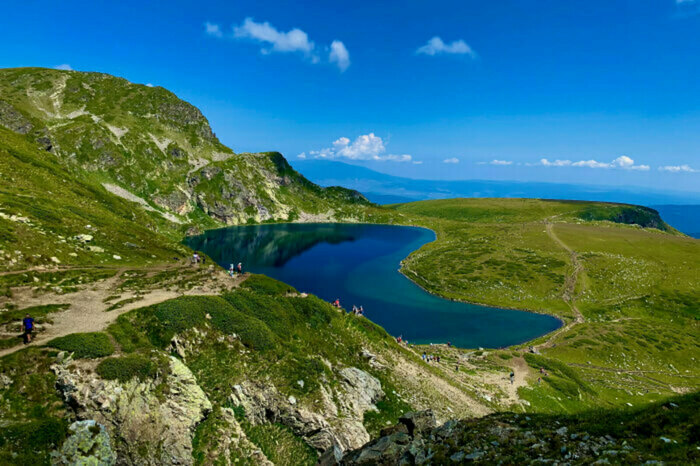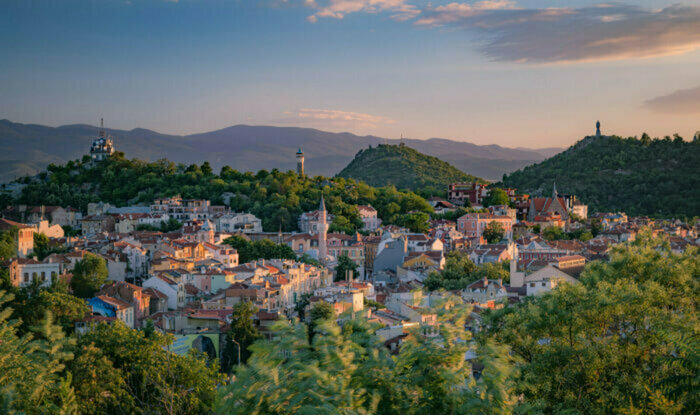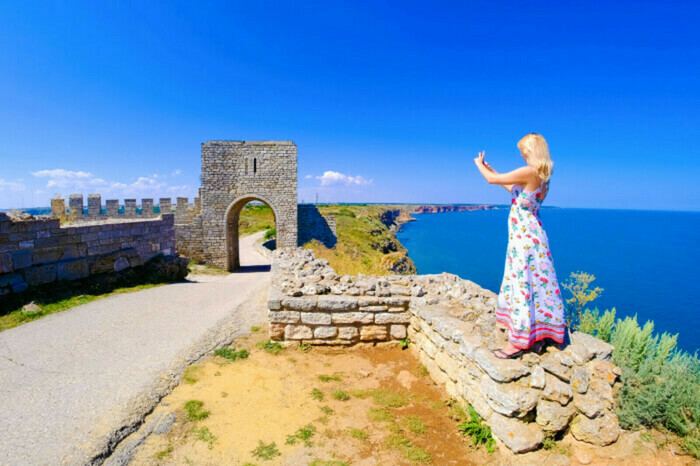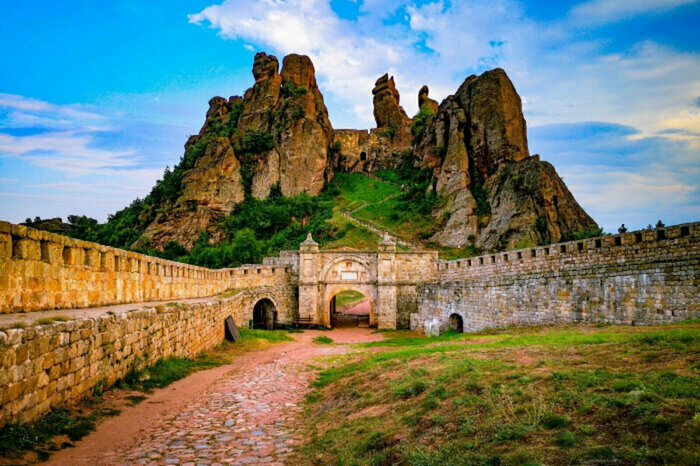Bulgaria: from museum-towns to natural treasures — what to see, how to get around, what to taste & the best souvenirs
Highlights and attractions in Bulgaria open doors to astonishing old towns and a rich natural heritage. Ancient monasteries, fortresses, cultural monuments, and mountain/coastal scenery set the stage for varied holidays — from beach time to hiking.
Top 15 attractions in Bulgaria
- Nesebar (Museum Town)
- Rose Valley
- Plovdiv
- Rila Monastery
- Balchik Botanical Garden
- Cape Kaliakra
- Madara Rider
- Wine Museum (Pleven)
- Varna
- Veliko Tarnovo
- Rock-Hewn Churches (Ivanovo)
- Sunny Beach
- Aladzha Monastery
- Sofia
- Queen Marie’s Palace (Balchik)
Essential attractions: Bulgaria between tradition and nature
1. Nesebar — Museum Town
Nesebar — the “pearl” on Bulgaria’s Black Sea coast, founded on a peninsula linked to the mainland by an isthmus of ~400 m. Old Town (ruins of “St. Sophia”, “St. Stephen” with hundreds of frescoes) + New Town (beaches, taverns, modern hotels).

2. Rose Valley
South of the Balkan Mountains, around Kazanlak: vast fields of rosa damascena, a festival from ~20 May–20 June, harvest at sunrise (you can join). Tourist transport is well organized.
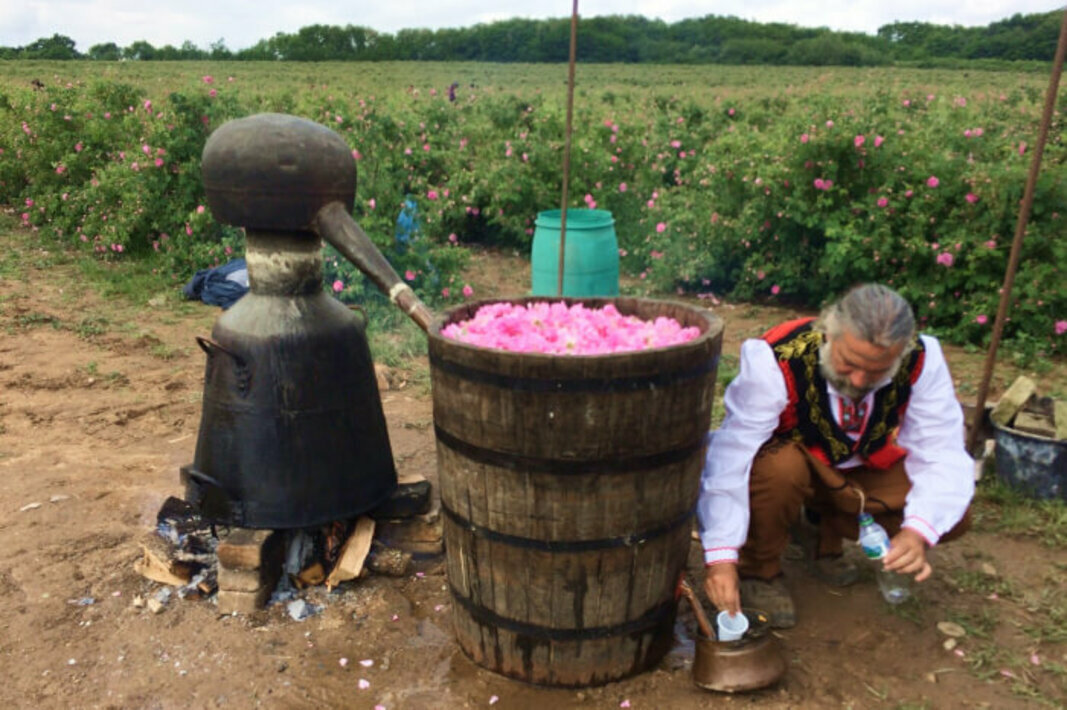
3. Plovdiv
The country’s second city: Ottoman mansions, 19th-century merchants’ houses, an active Roman Theatre in summer, museums (Thracian/ancient artefacts), Dzhumaya Mosque, and the Church of the Holy Mother of God.
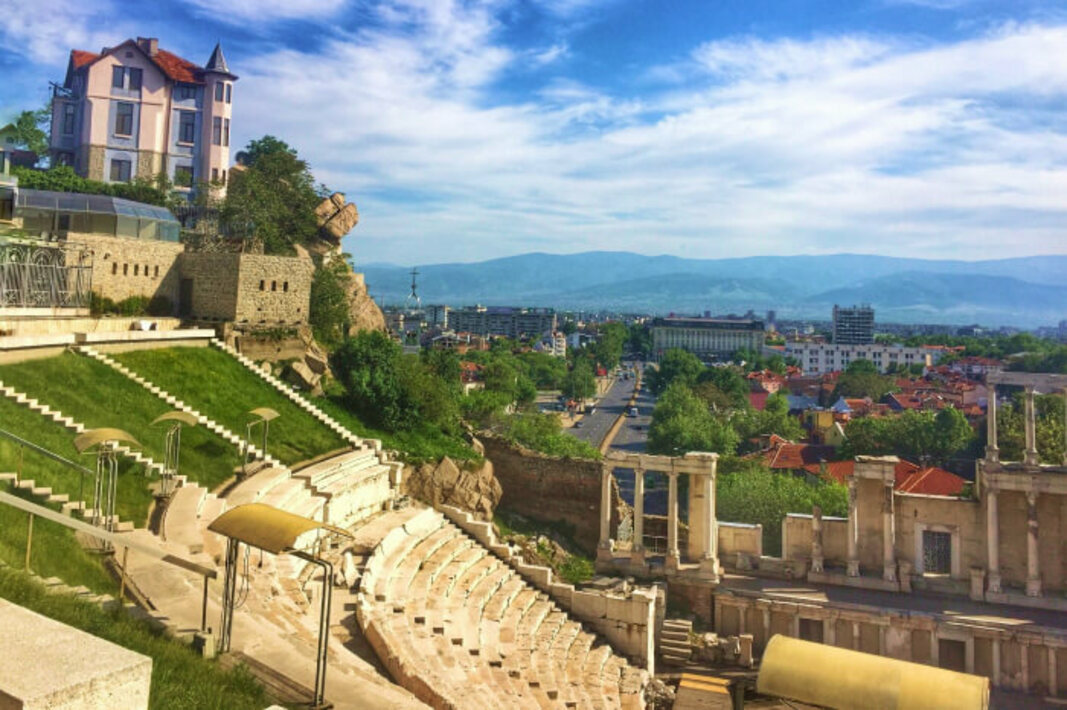
4. Rila Monastery
~130 km south of Sofia in the Rila Mountains: 10th century, Bulgaria’s spiritual heart, UNESCO-listed. A vast complex with the Hrelja Tower (14th c.). Good road, final section mountainous — comfortable footwear recommended.
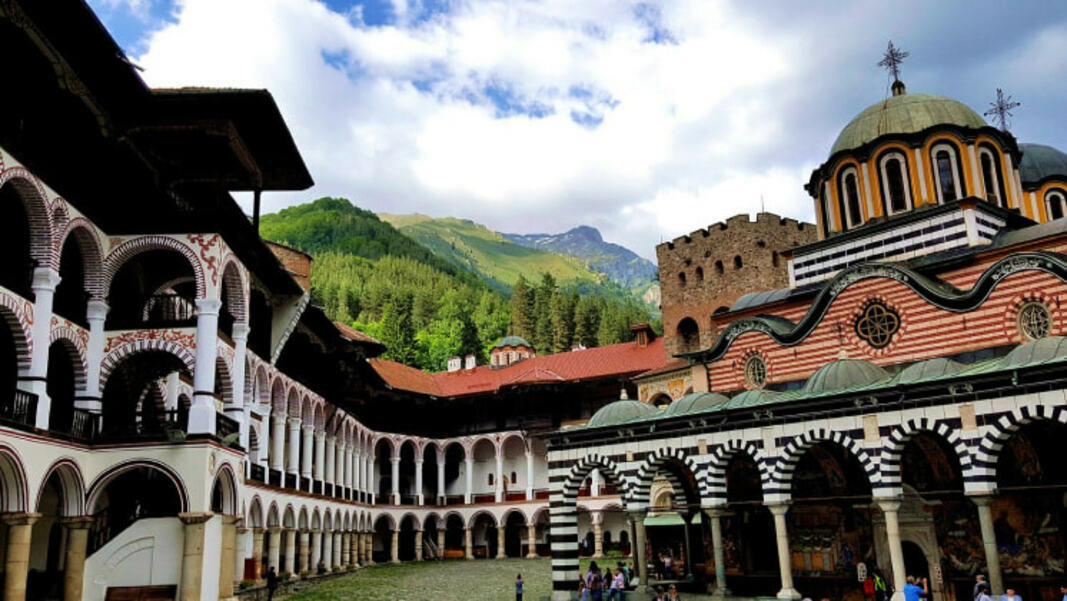
5. Balchik Botanical Garden
Balchik: spectacular collections (cacti/succulents), ~3,000 species across 6 ha, floral carpets, rare trees. Perfect to pair with Queen Marie’s Palace.
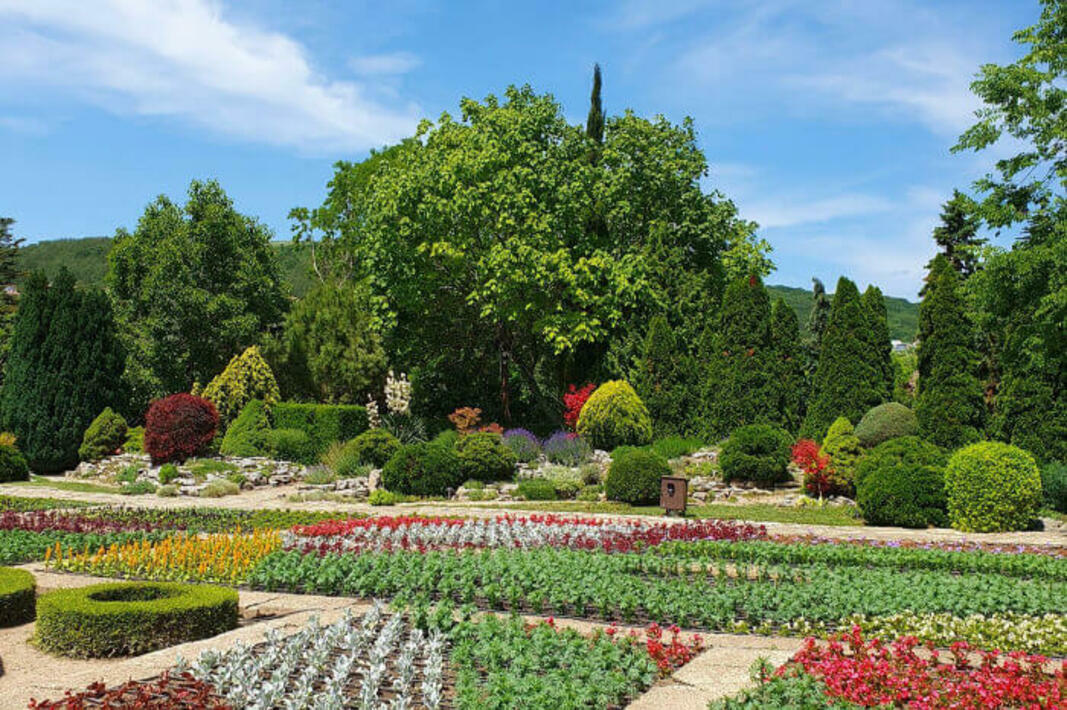
6. Cape Kaliakra
Dramatic headland, ancient fortress, local legends (the “40 maidens”, St. Nicholas). Museum (April–October), clifftop paths — choose low-soled footwear.
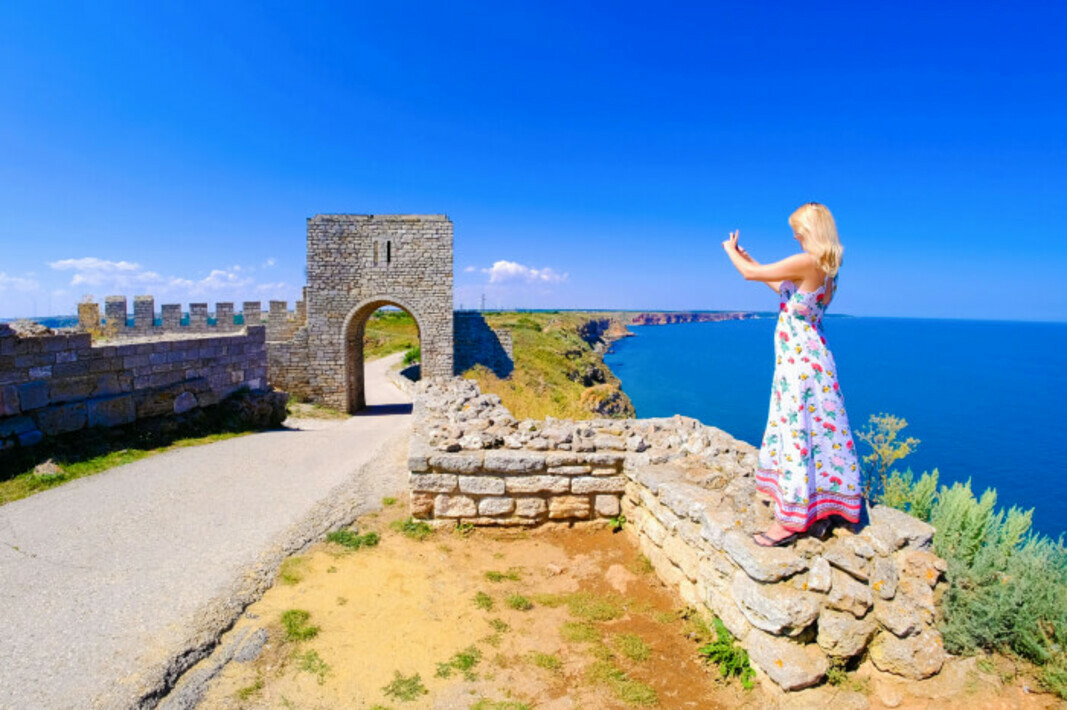
7. Madara Rider
Rock relief (~2.6 m high), a national symbol, likely 8th century. West of Varna in the Madara massif. UNESCO-listed.
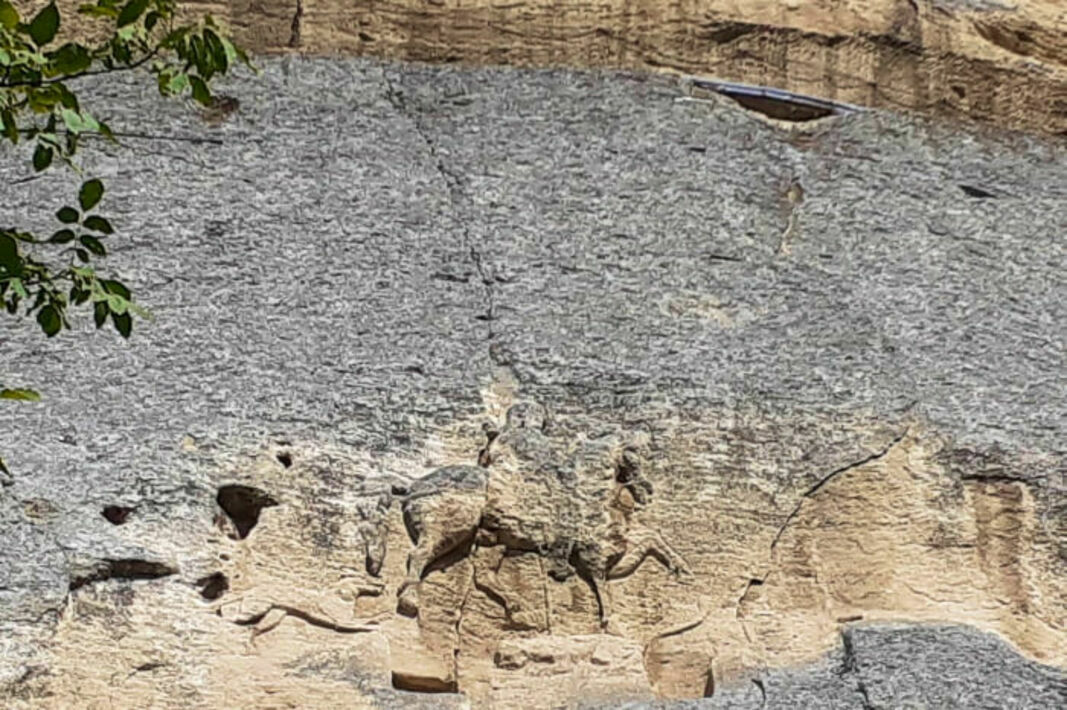
8. Wine Museum (Pleven)
Opened inside the caves of Kaylaka Park (2008). 12,000+ bottles, including a collection of ~7,000 aged wines (30–100 years). Tastings and purchases on site.
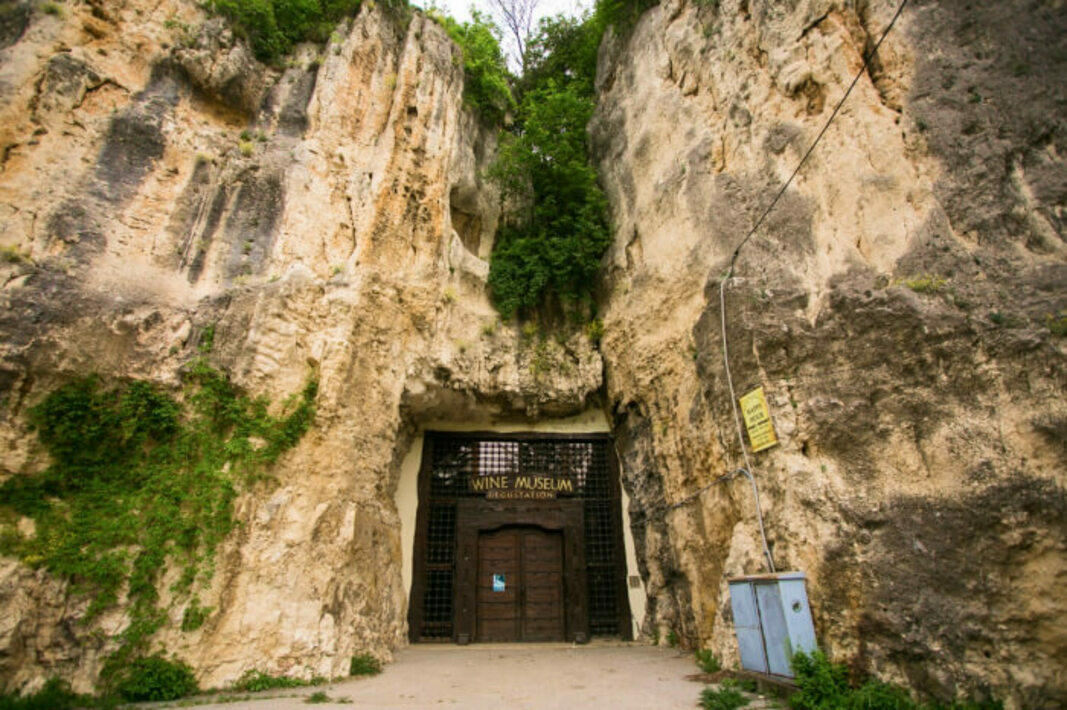
9. Varna
Urban resort with airport/port/rail; the Sea Garden (aquarium, zoo, dolphinarium), Roman Thermae, and the “Stone Forest.” Religious sights: the Dormition of the Mother of God Cathedral, Armenian Church of St. Sarkis.

10. Veliko Tarnovo
Former medieval capital on 4 hills along the Yantra River. Tsarevets Fortress is the historic symbol (towers, walls, churches). Local cuisine, nightlife, plus hiking/cycling/climbing.
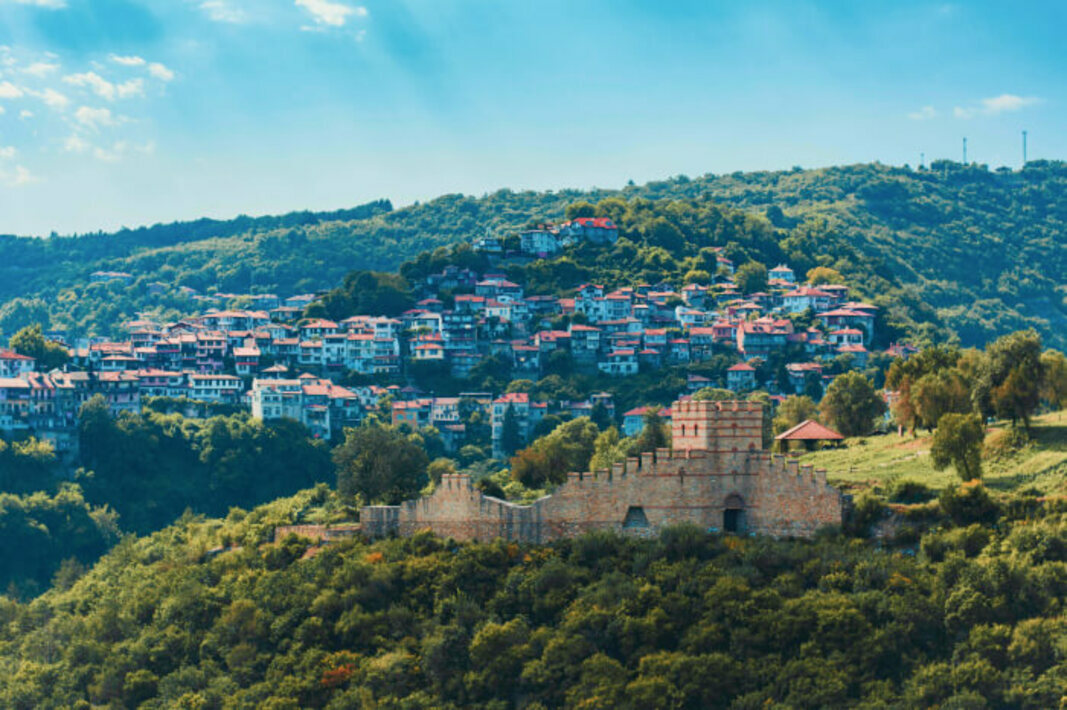
11. Rock-Hewn Churches (Ivanovo)
A complex of cave-cut churches (13th c.), unique frescoes, a pilgrimage site; UNESCO-listed.
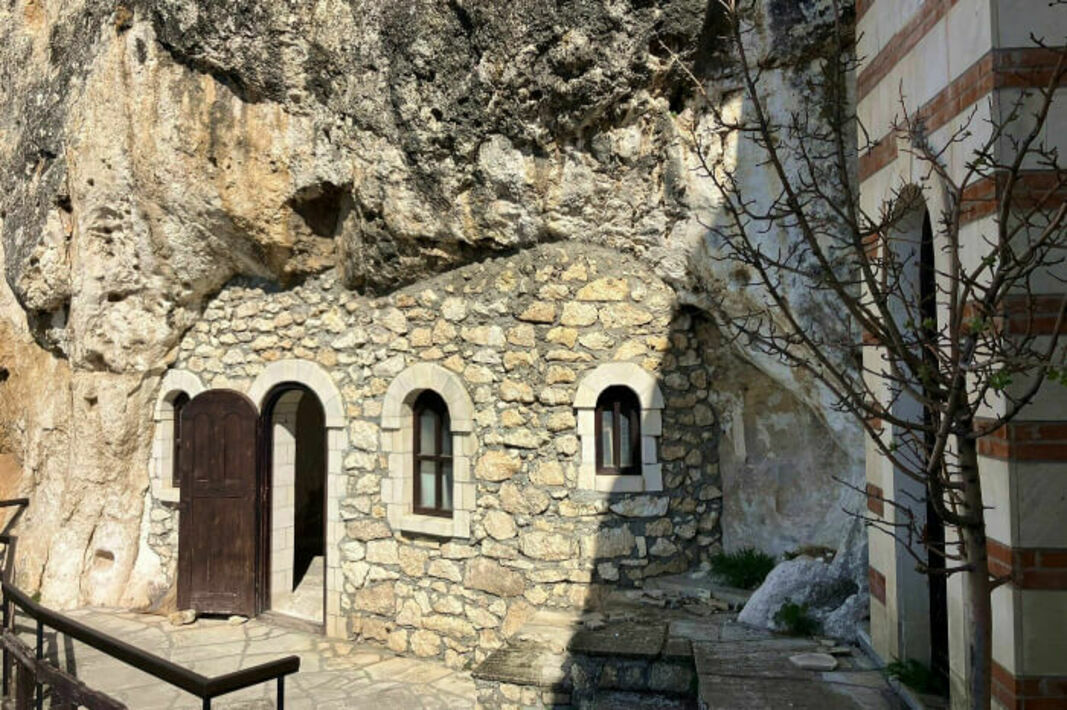
12. Sunny Beach
The largest seaside resort, ~300 sunny days/year. Hotels for all budgets, Action Aquapark, amusement park; a wide choice of coastal excursions.
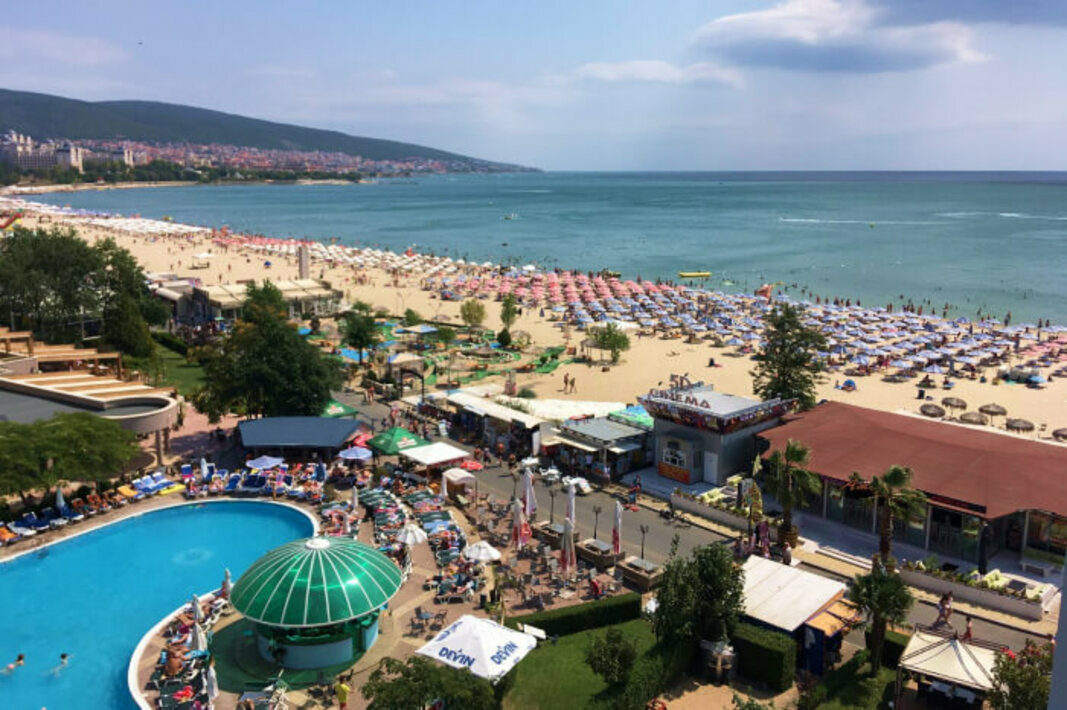
13. Aladzha Monastery
Rock monastery (13th c.) near Varna; two levels (quarters + chapel), a small museum, medieval legends.
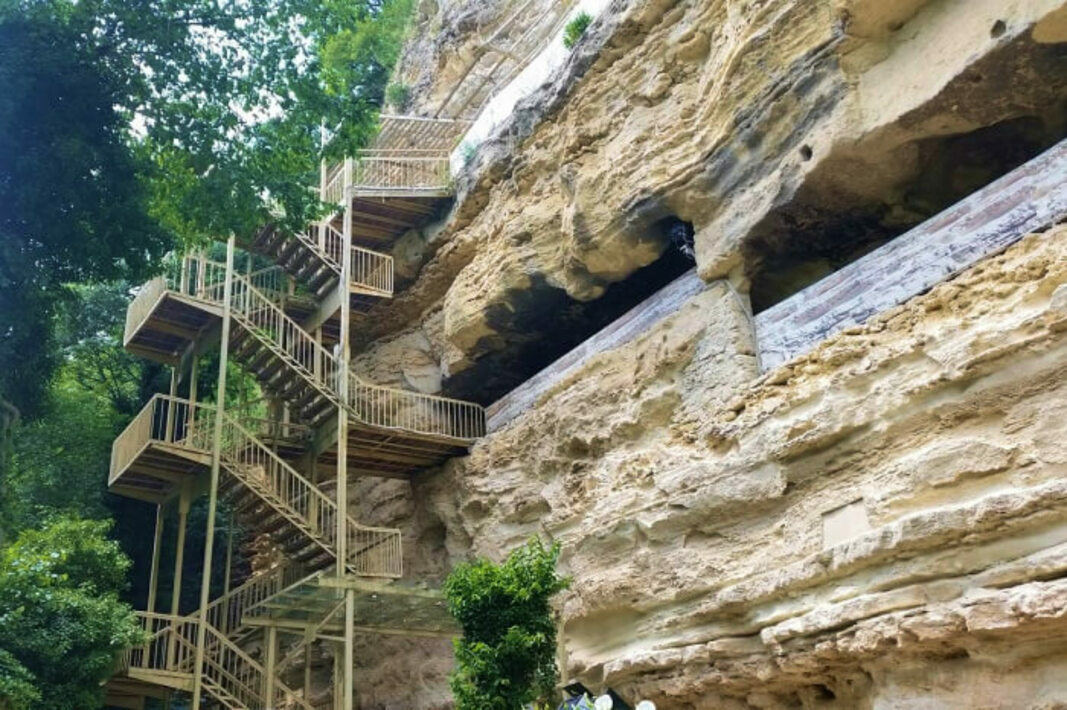
14. Sofia
Capital city: Alexander Nevsky Cathedral (national symbol), Russian Church of St. Nicholas, St. George Rotunda, Boyana Church, Sveta Nedelya, plus modern experiences (Museum of Illusions).
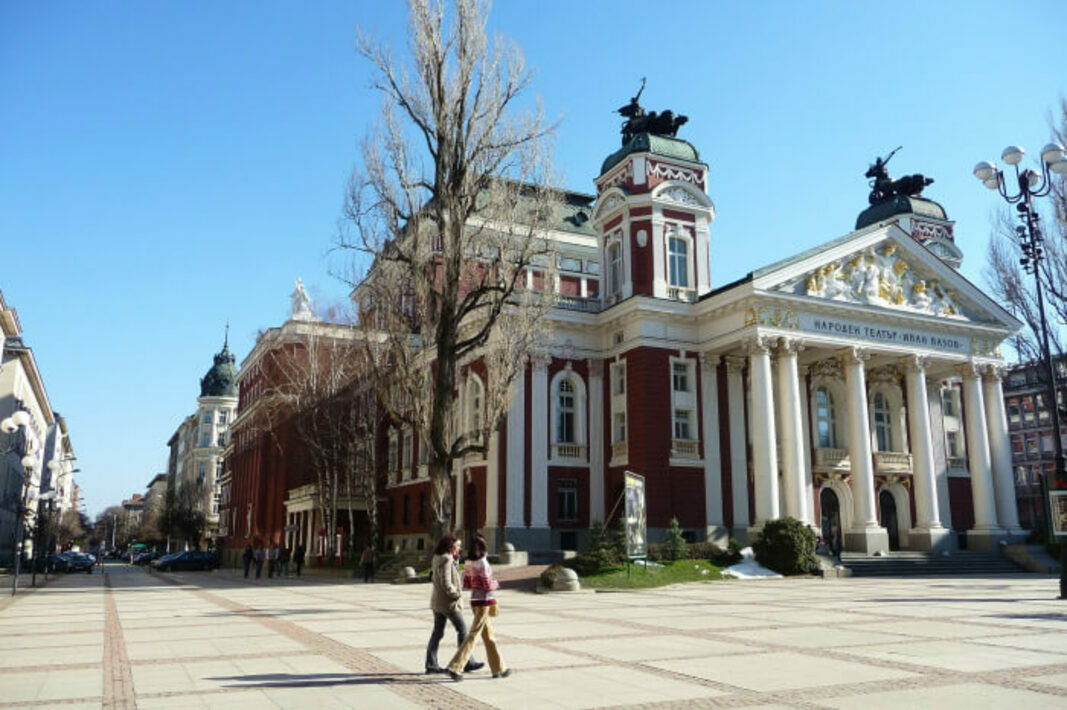
15. Queen Marie’s Palace (Balchik)
“The Quiet Nest” (1926–1937) — a charming blend of styles, a minaret alongside chapels, flower-lined alleys. Hours: summer 08:00–20:00; winter 08:30–17:00.
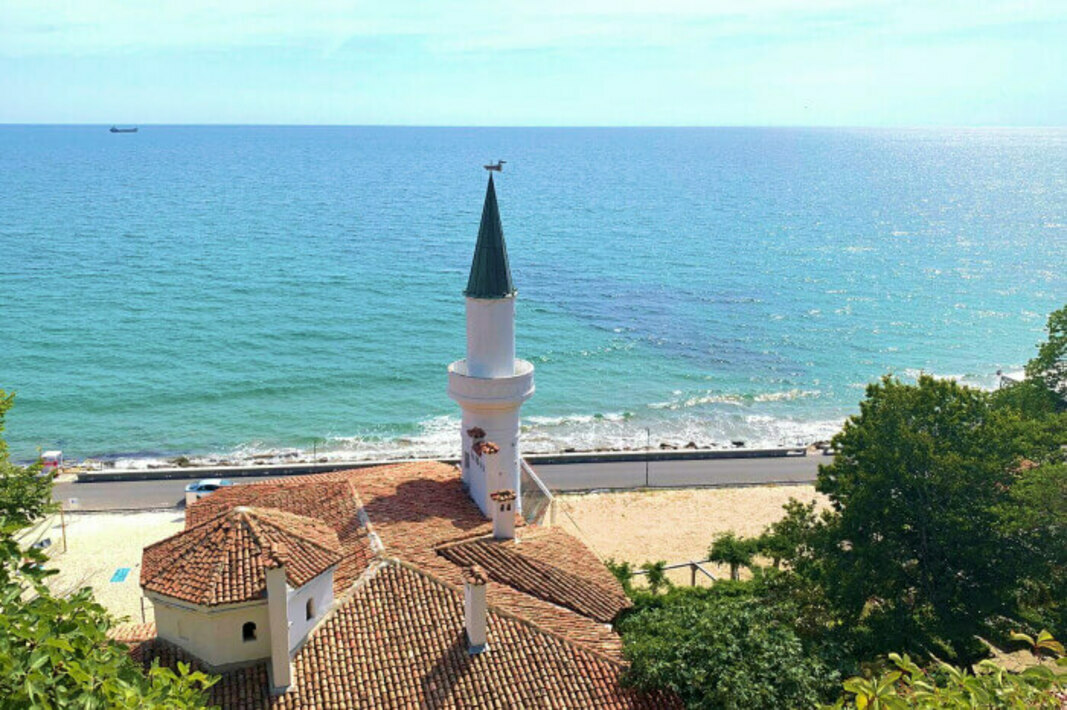
Remarkable natural sights
Belogradchik Rocks
Spectacular rock formations ~180 km from Sofia, also accessible by train; a natural “set” that leaves lasting impressions.
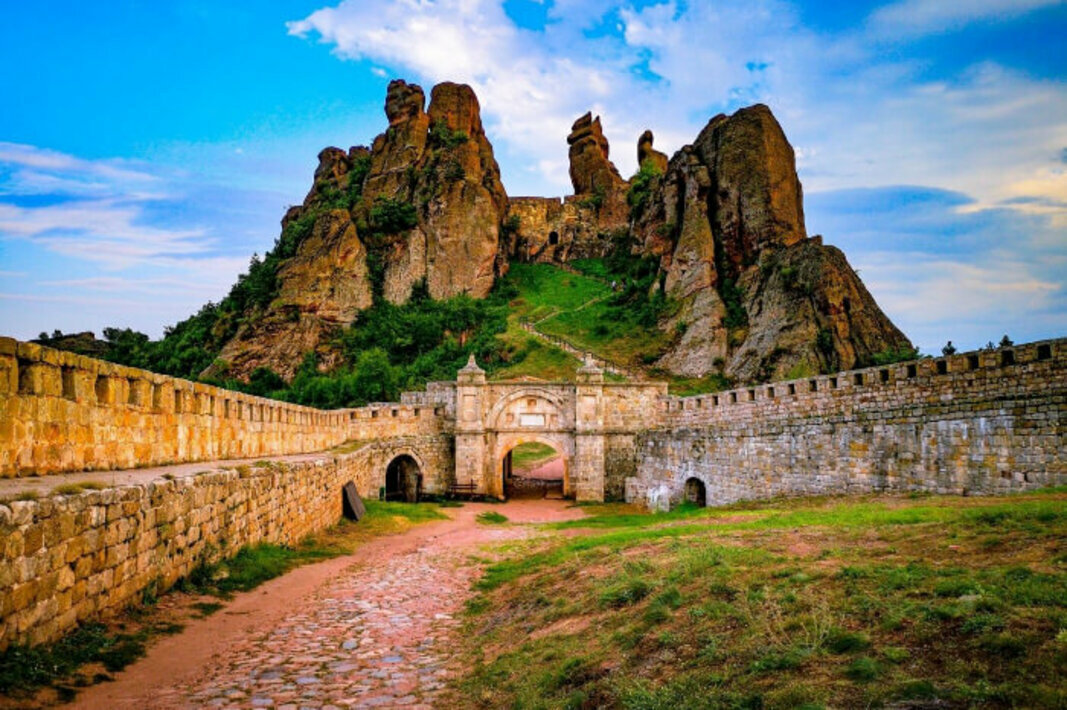
Rila Lakes (the “Seven Lakes”)
A stunning glacial group in the Rila massif; classic route: chairlift from Pionerska + hike between the lakes, with amazing panoramas.
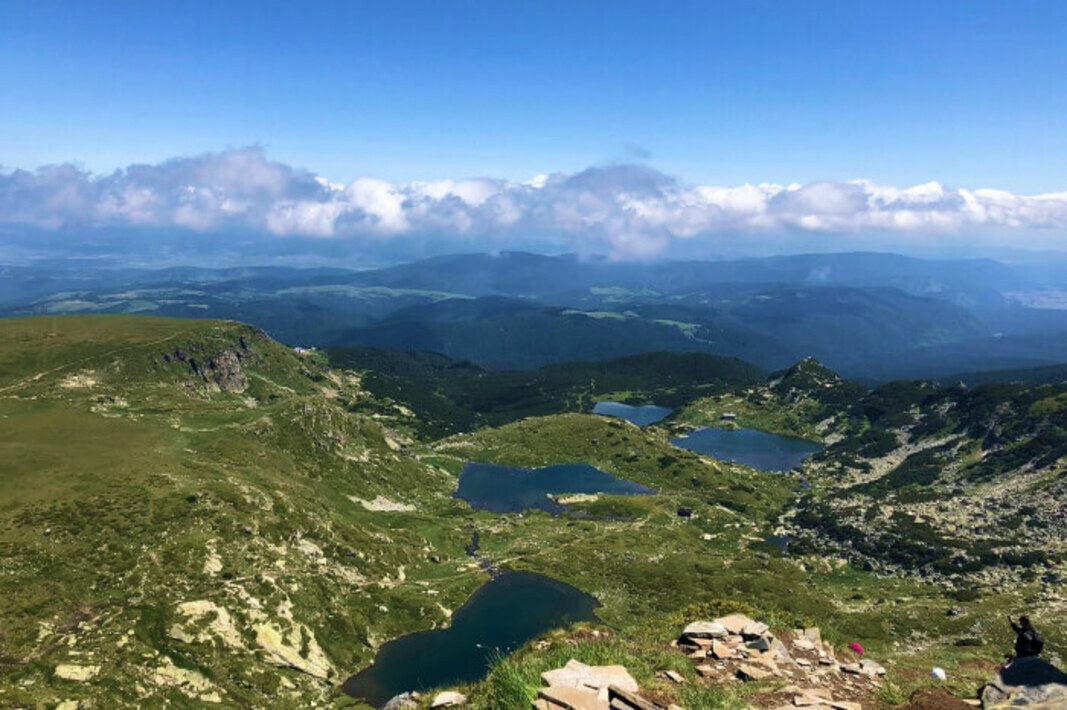
Famous caves
Yagodina, Devil’s Throat, Ledenika — vast and spectacular, located in different provinces (plan a dedicated itinerary if you want to see them all).
Beglik Tash (“Bulgarian Stonehenge”)
A megalithic sanctuary near Primorsko, with huge blocks thousands of years old, associated with religious rites and astronomical observations.

What to taste in Bulgaria?
Cuisine rich in fresh vegetables, meats, and dairy — Balkan/Mediterranean/Turkish influences.
- Shopska — salad of tomatoes/cucumbers/Bulgarian sirene cheese;
- Tarator — cold yogurt & cucumber soup;
- Kebab/šashlik — grilled meats;
- Banitsa, baklava — beloved desserts;
- Bulgarian yogurt — used in soups, sauces, desserts;
- Rakia & ayran — classic drinks.
Souvenirs worth bringing home
- Cosmetics/perfumes with rose oil
- Rakia & wines (incl. rose liqueur)
- Traditional ceramics
- Embroidery and artisanal textiles
- Honey & organic farm products
- Local dolls and toys
- Dried fruits, herbal teas
Weather in Bulgaria: when to go
Best windows: April–June and September–October for exploring; June–September for beaches; December–March for skiing.
Bulgaria tours with Admiral Travel
Sofia city breaks, seaside stays (Sunny Beach, Golden Sands, Albena) or culture circuits (Plovdiv–Veliko Tarnovo–Rila–Balchik). We organize tailored packages with flights, transfers, accommodation, and optional excursions.
- Round-trip flight + 8 kg cabin bag
- Airport–hotel–airport transfer
- 3–7 nights’ accommodation with breakfast/All Inclusive
- Panoramic tour (depending on destination)
- Medical insurance
- Checked baggage (where applicable)
- Optional excursions
- Entrance tickets & entertainment
- Rila Monastery + Rila Lakes
- Plovdiv & Veliko Tarnovo
- Nesebar & Cape Kaliakra
- Balchik: Palace + Botanical Garden
- Devil’s Throat Cave (dedicated itinerary)
Hotline: +(373) 22 844 744
Bulgaria — history, nature, hospitality
From museum-towns and ancient monasteries to mountains, caves, and coastline, Bulgaria offers travelers a rare blend of culture and landscapes. Plan smart and enjoy a memorable holiday!
Want to explore Bulgaria in depth? Book your trip now and discover the main highlights of one of Southeast Europe’s most diverse destinations!

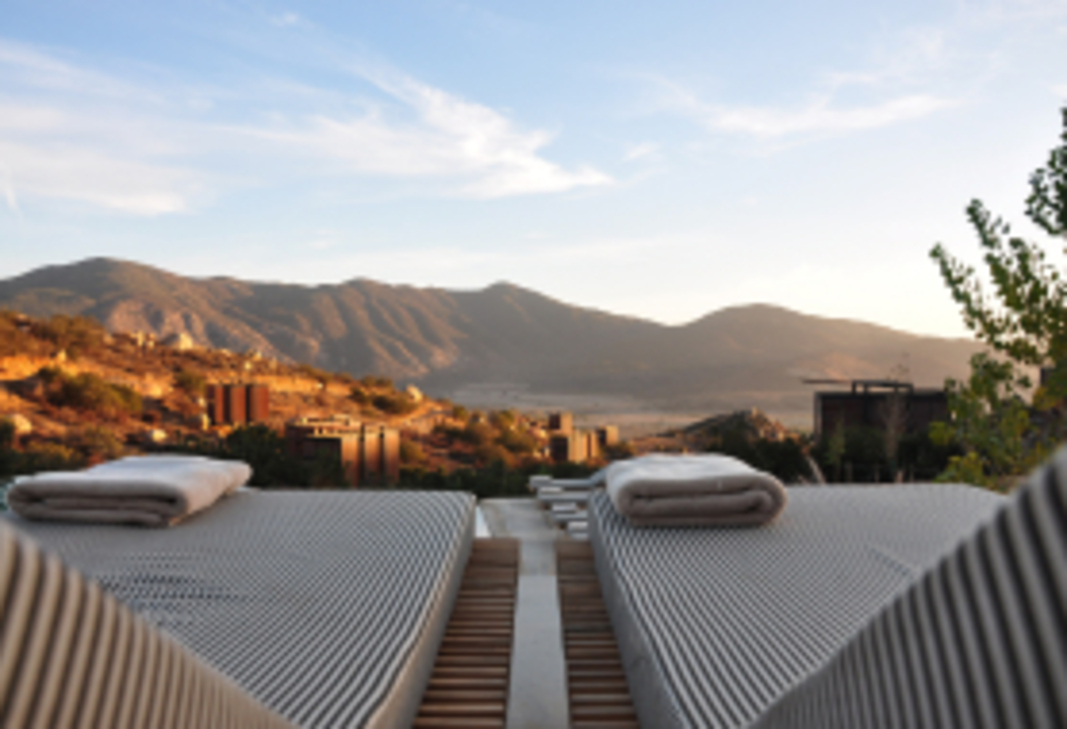
 Enter
Enter


